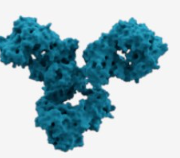Glycans, also known as carbohydrates or polysaccharides, are fundamental constituents of all cellular life. They play essential roles in various biological processes, including cell-to-cell communication, immune response, and disease progression, among others. Accurate glycan purification, glycan identification, and anti-glycan antibody assays are crucial in advancing our understanding of glycans and their roles in biology and medicine.
Glycan purification is a critical initial step in the study of glycans. It is the process of extracting and isolating glycans from an organism or cell culture to make them available for further study. Purification allows researchers to separate glycans for individual analysis and remove unwanted materials that may interfere with the results, thus increasing the accuracy of any subsequent procedures. Various methodologies are utilized in glycan purification, dependent on the type, structure, and purpose of analysis, ranging from chromatographic separation techniques to enzymatic methods.
Once glycans are purified, the next essential step is glycan identification. Glycans are notorious for their structural complexity and heterogeneity. Hence, they pose unique challenges in terms of their identification and characterization. Glycan identification involves determining the precise chemical structure of a carbohydrate based on different pieces of evidence, such as molecular weight or size and chemical properties. Techniques used in glycan identification often include Mass Spectrometry or Nuclear Magnetic Resonance (NMR), which allow researchers to map out the exact composition of a glycan and establish an identification profile that aids future studies.
After purifying and identifying glycans, scientists often utilize anti-glycan antibody assays to further their understanding of biological systems. Anti-glycan antibody assays aim to detect antibodies produced against specific glycans. These antibodies are typically a part of the immune response against pathogens, disease progression, or vaccination. Detecting these antibodies can provide valuable insights into the immune response and help researchers understand and intervene in disease states.
For instance, in the case of cancer, abnormal glycan structures are often present on tumor cells. Identifying these glycans and the antibodies that recognize them helps scientists develop targeted therapies and diagnostics. Similarly, anti-glycan antibodies play a pivotal role in investigating and combating infectious diseases, where pathogens often use glycans to invade host cells.
Anti-glycan antibody assays use various technologies to detect these antibodies, including enzyme-linked immunosorbent assays (ELISA), Western blotting, and microarray technologies. These assays all rely on the specific binding of an antibody to its corresponding glycan to produce a detectable signal, signifying the presence of the antibody.
In conclusion, glycan purification, glycan identification, and the anti-glycan antibody assay play a significant role in elucidating the functionalities of glycans in life and health sciences. These processes underpin the essential research into diseases, their treatments, and further advancements in the field of glycobiology. Continued investment in improving these methodologies will grant broader insight into the incredible potential glycans hold for medicine and biology, equipping scientists with the necessary tools to further unravel the complex puzzle of glycans.



